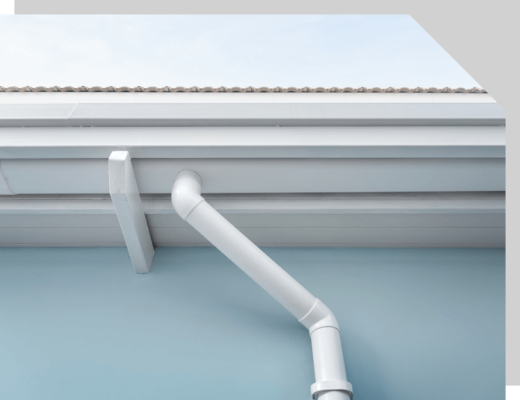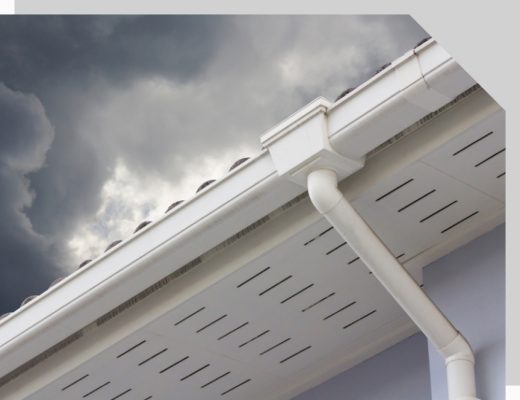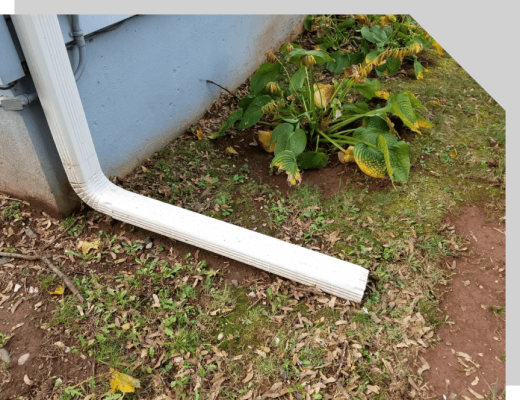How to Achieve Correct Gutter Slope
Effective gutter systems play a vital role in protecting buildings from water damage by channeling rainwater away from the structure. However, simply having gutters installed isn’t sufficient; a proper gutter slope is essential for efficient drainage.
The expert gutter contractors from Thunder Bay Roofing explain gutter slope, why it matters, and how to achieve and maintain the correct slope for your home’s gutters. If you’re looking for gutter installation services in Edgewater, MD, contact us today by calling 410-956-7663.

What Is a Gutter Slope?
The gutter slope is the angle at which the gutters are installed, allowing water to flow towards the downspouts and away from your home’s foundation. Proper gutter slope is crucial for the efficient function of your gutter system and the protection of your home from water damage and erosion. If your home has an improper gutter slope, water can accumulate in the gutters, leading to damage to various parts of your property.
Common Problems Caused by Improper Gutter Slope
Improper gutter pitch can cause various problems, including:
- Water accumulation, which leads to potential damage to the roof, fascia, and foundation
- Increased risk of leaks and water damage to your home’s interior
- Overwhelming the gutters, causing sagging gutters or for them to detach or collapse
- Insufficient water flow to the downspouts, leading to clogs and potential damage
- Excessive water flow leads to splashing and erosion around the foundation
- Increased risk of ice dams in colder climates, which can cause further damage to your roof and gutters

What Is the Proper Gutter Slope?
The proper gutter slope is generally between 1/16 and 1/2 inch per foot, depending on the roof’s pitch and the amount of rainfall in your area. Achieving the correct slope requires careful measurement and the use of appropriate hangers or brackets. A professional gutter installer can help ensure that your gutters are properly sloped.
How to Calculate Gutter Slope
There are two main ways to calculate a gutter slope:
- Using the Gutter Slope Rule: The most common way to calculate gutter slope is to use the general rule of thumb: ½ inch of vertical drop for every 10 feet of gutter run. This means that the end of your gutter where the downspout is located should be ½ inch lower than the farthest end from the downspout.
- Using the Gutter Slope Formula: A more precise way to calculate gutter slope is to use the following formula: Vertical rise (inches) / horizontal run (feet) = gutter slope (inches per foot). This formula takes into account the specific length of your gutter run and allows for a more accurate calculation of the slope.
The Benefits of Proper Gutter Slope
There are several benefits to having properly sloped gutters, including:
- Effective Water Drainage: The primary benefit of gutter slopes is efficient water drainage. By ensuring that gutters are sloped correctly, rainwater can flow smoothly towards the downspouts and away from the building.
- Prevention of Water Damage: A correct slope significantly reduces the risk of water damage to the building’s exterior, including the roof, siding, windows, and doors. Directing water away from the structure minimizes the likelihood of leaks, rot, mold, and other moisture-related issues that can compromise the integrity of the property.
- Preservation of Landscaping: An adequate gutter slope helps protect landscaping features such as flower beds, shrubs, and trees from water runoff. By directing water away from these areas, the slope minimizes soil erosion and maintains the health and aesthetics of the landscape.
- Prevention of Foundation Problems: Improper water drainage around the foundation can lead to serious foundation issues, including cracks, settlement, and structural instability. Accurate slopes help prevent excess water from pooling near the foundation, reducing the risk of costly repairs and structural damage.
- Minimization of Pest Infestation: Stagnant water in clogged or improperly sloped gutters can attract pests such as mosquitoes, insects, and rodents. By maintaining the correct gutter slope and ensuring proper drainage, property owners can minimize the risk of pest infestation and protect the health and comfort of occupants.
- Longer Gutter Lifespan: A correct slope reduces the likelihood of debris buildup, clogs, and water pooling, which can cause premature deterioration of the gutter system. By promoting optimal water flow and drainage, proper gutter slope extends the lifespan of gutters, saving property owners time and money on repairs and replacements.
- Prevention of Ice Dams: In cold climates, proper gutter slopes help prevent the formation of ice dams on the roof. By ensuring that water is effectively drained away from the roof’s edge, the slope minimizes the risk of ice buildup and associated roof damage during the winter months.
- Enhanced Curb Appeal: Maintaining the best slope contributes to the overall appearance and curb appeal of the property. By preventing water stains, mold growth, and other unsightly issues caused by poor drainage, the slope helps preserve the aesthetic value of the property and enhances its marketability.
How to Maintain Proper Gutter Slope
Maintaining a proper gutter slope requires regular inspection and maintenance. Here are some tips to keep your gutters functioning properly:
- Clean your gutters at least twice a year to remove debris and ensure water flow
- Trim overhanging tree branches to prevent them from obstructing the gutters
- Install gutter guards to prevent leaves and debris from entering the gutters
- Check for damage to the gutters, hangers, and downspouts and repair as necessary
- Schedule regular inspections with a professional gutter installer to ensure proper function and slope.

Frequently Asked Questions
Fixing improper gutter slopes can be challenging and should be done by a professional. They can assess the current slope, recommend a solution, and install the necessary hangers or brackets to achieve the proper slope. Attempting to fix the slope yourself can be dangerous, as it may involve working at heights and handling heavy materials.
Yes, gutters are supposed to slant downward. This slant, also called gutter pitch, is crucial for proper water drainage away from your house.
No, gutters shouldn’t be slanted in the traditional sense of appearing tilted at a steep angle. They should be nearly level to the eye, but with a very slight pitch or slope that’s angled downward towards the downspouts.
There are two common rules of thumb for gutters:
- Slope: Gutters should have a slight slope towards the downspout to encourage water to flow freely. The general rule is ¼ inch of vertical drop for every 10 feet of gutter run. This means the end of your gutter by the downspout should be ¼ inch lower than the farthest end from the downspout.
- Size: When in doubt, bigger is better for gutters. A larger gutter can handle heavier rainfall compared to a smaller one. Common residential gutter sizes are 5 inches and 6 inches wide.
